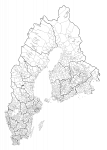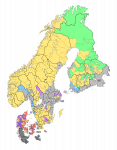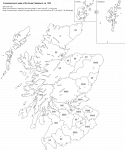- Location
- Das Böse ist immer und überall
- Pronouns
- he/him
Last edited:
I am officially down the rabbithole.



I assume Karelia has no contemporary subunits with population figures available?
I think the Hats could be competitive in Viborg itself, and maybe the far southwest of the county depending on how far the Swedish language has spread.Both me and @Ares96 agree that had it not been for the military administration, the Finnish Agrarians and the Caps would be dominating more or less totally, with the Hats for the most part having no chance in hell of winning.
Really, with the possible exception of Iceland (and that’s mainly because I haven’t looked), all the Nordic countries have been amazing at keeping statistics back to the mid-19th century or so available online.EDIT: Though I think they should be included in that Finnish census that Ares found. And getting maps for those shouldn't be much of a problem either. Certainly nowhere near the clusterfuck quagmire that was Holstein!
Really, with the possible exception of Iceland (and that’s mainly because I haven’t looked), all the Nordic countries have been amazing at keeping statistics back to the mid-19th century or so available online.
PDF scans of old publications, generally. You might be interested to know that before WWII, a lot of them have summaries and term translations in French.What form do they take? Because I've got a lot of fun with census and tables décennales from the French état-civil from the Revolution onwards and the parish records before that are not bad.
PDF scans of old publications, generally. You might be interested to know that before WWII, a lot of them have summaries and term translations in French.

Can you blame me?I see you've not even tried to draw in Cromartyshire.
Can you blame me?
*idly wonders if there's any correlation between that and IndyRef*Very nice work Max.
I hope this hasn't rendered any of your work redundant, but Wiki has a map of the vote for the Act of Union in 1707 that includes the Cromartyshire border: https://en.wikipedia.org/wiki/File:...n_the_ratification_of_the_Treaty_of_Union.svg
